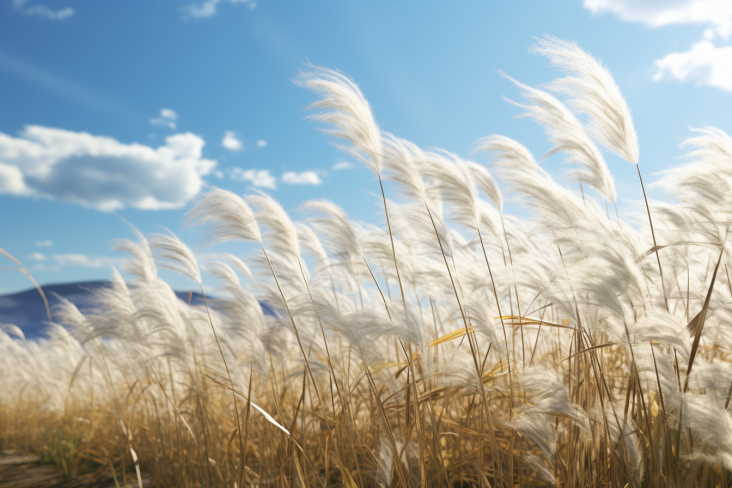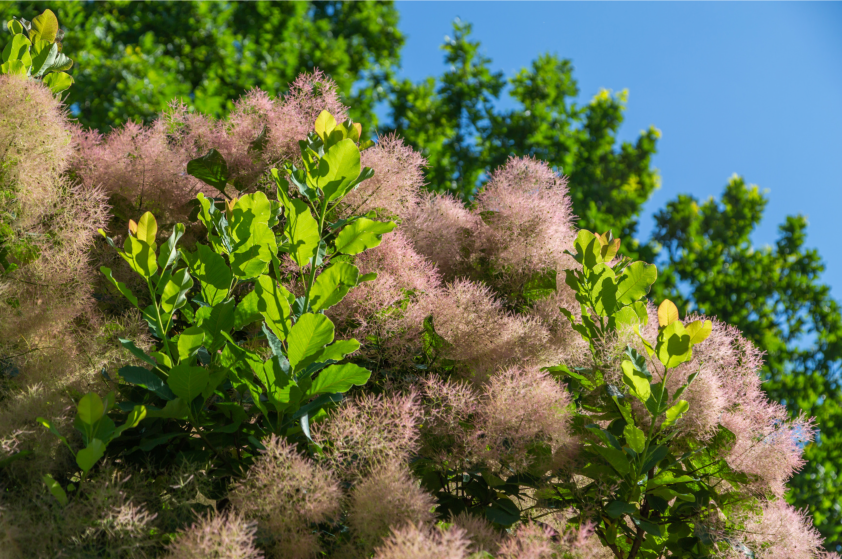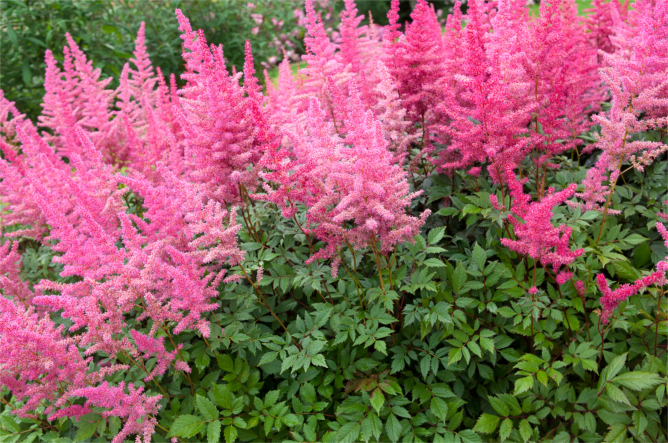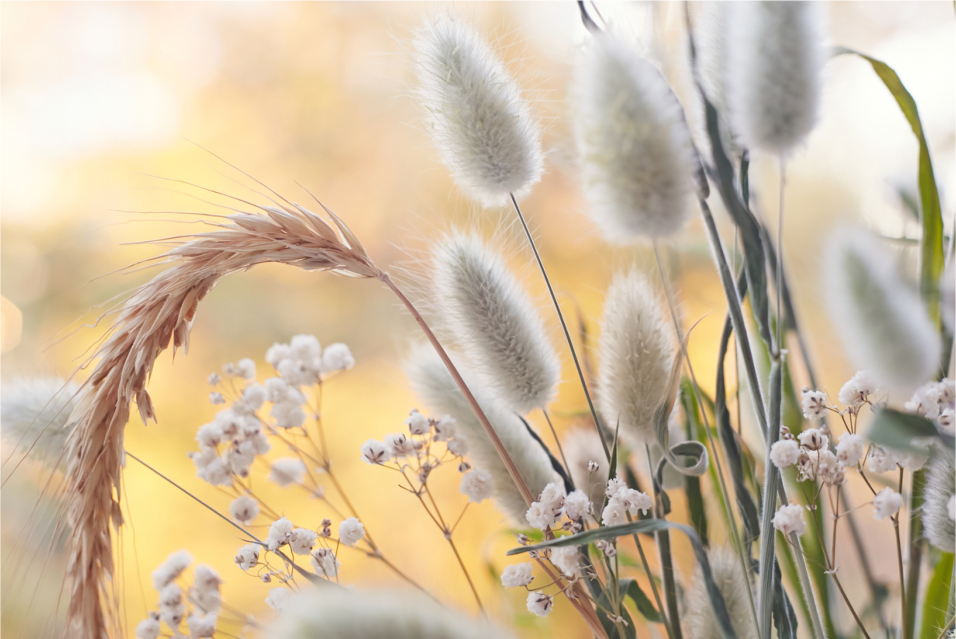Fluffy Flower and Plants
Fluffy flowers and plants are a delightful addition to any garden or landscape design. What sets them apart is their soft and tactile quality, which adds a unique sensory element to your outdoor space. Whether you’re drawn to the gentle fuzziness of certain leaves or the cloud-like plumes of ornamental grasses, fluffy plants have a charm all their own.
In the world of gardening and landscaping, the appeal of fluffy textures is undeniable. They provide contrast and depth, creating visual interest in your garden beds. Additionally, their softness invites touch, making them especially captivating for children and adults alike.
Flowers and plants with fluffy textures can add a touch of whimsy and elegance to any garden or landscape. In this article, we will explore 10 stunning fluffy flowers and plants that are sure to capture your gardening imagination. These unique specimens not only provide visual appeal but also offer a sensory experience with their soft and tactile features. Whether you’re a seasoned gardener or just starting, these selections are bound to inspire your outdoor spaces. Let’s dive into the world of fluffy botanical wonders.
10 Stunning Fluffy Flowers & Plants
Fluffy flowers and plants add a touch of charm and elegance to any garden or landscape. Their soft, tactile textures and unique appearances make them stand out. Here are 10 stunning fluffy flowers and plants that you should consider adding to your outdoor space:
1. Lamb’s Ear (Stachys byzantina)
Lamb’s Ear, scientifically known as Stachys byzantina, is a perennial plant admired for its unique appearance. Its leaves are a silvery-gray color, and they’re covered in soft, fuzzy hairs, giving them a velvety texture reminiscent of a lamb’s ear—hence the name.
To grow Lamb’s Ear, you’ll want to provide well-drained soil and full sun to partial shade. It’s a low-maintenance plant that thrives in various climates. Regular pruning can help keep it neat and prevent overgrowth.
Beyond its aesthetic appeal, Lamb’s Ear is a versatile plant. Its soft leaves make it an excellent choice for sensory gardens or as a ground cover. Additionally, its texture contrasts beautifully with other plants, creating interest in mixed flower beds.
2. Mulla Mulla (Ptilotus exaltatus)
Mulla Mulla, scientifically known as Ptilotus exaltatus, is a native Australian plant celebrated for its unique, fluffy flower heads. These flower heads are made up of tiny, densely packed, and soft pink or purple bracts, creating a stunning visual display.
Growing Mulla Mulla successfully involves providing it with well-draining soil and plenty of sunlight. It’s drought-tolerant once established, making it a resilient choice for gardens in arid regions.
Mulla Mulla’s distinctive appearance makes it an excellent candidate for floral arrangements. The fluffy flower heads add a touch of elegance to bouquets and centerpieces. Consider incorporating this Australian beauty into your garden for a dash of Down Under charm.
3. Cotinus (Smoke Bush)
Cotinus, commonly known as Smoke Bush, is a deciduous shrub or small tree celebrated for its unique smoky appearance. The plant gets its name from the frothy, pink to purplish, cloud-like inflorescences it produces in late spring and early summer.
To cultivate Cotinus successfully, choose a sunny location with well-drained soil. Pruning in late winter can help maintain its shape and encourage new growth.
One of the exciting aspects of Cotinus is the variety of cultivars available, each with its own color variations. From deep purples to fiery oranges, there’s a Cotinus cultivar for every garden palette. Whether used as a focal point or part of a shrub border, Cotinus brings a touch of drama and elegance to any landscape.
4. Bunny Tails (Lagurus ovatus)
Bunny Tails, scientifically known as Lagurus ovatus, are annual grasses cherished for their adorable fluffy seed heads that resemble—you guessed it—bunny tails. These soft, white or pale pink plumes are a charming addition to gardens.
Growing Bunny Tails is relatively straightforward. They prefer well-drained soil and full sun. They’re often used for ornamental purposes, such as edging flower beds or in containers. Their whimsical seed heads can also be dried for decorative arrangements.
In addition to traditional gardening, Bunny Tails have gained popularity in the world of dried flower arrangements. Their unique texture and softness make them a favorite for crafting bouquets that last. Consider incorporating these delightful bunny tails into your garden or indoor flower displays.
5. Chinese Fringe Flower (Loropetalum chinense)
Chinese Fringe flower, scientifically known as Loropetalum chinense, is a striking shrub known for its vibrant foliage and fluffy flowers. The leaves of this plant can range from deep purple to green, providing year-round interest.
Planting and caring for Chinese Fringe flower is relatively straightforward. It prefers well-drained soil and benefits from regular pruning to maintain its shape. Additionally, it’s adaptable to different sunlight conditions, making it a versatile choice for gardens.
One of the unique aspects of this plant is its ability to be pruned and shaped into various forms. Whether you prefer a compact shrub or a dramatic hedge, Chinese Fringe Flower can be molded to suit your landscaping needs. Its fluffy pink or white flowers add a touch of softness to its bold foliage, making it a standout choice for your garden.
6. Astilbe (Astilbe spp.)
Astilbe, part of the Astilbe spp. genus, is a perennial plant known for its feathery plumes of flowers. These plumes come in various colors, including white, pink, and red, creating a beautiful contrast against its green foliage.
Growing Astilbe successfully involves planting it in well-draining soil in shaded to partially shaded areas. While they can tolerate some sunlight, they thrive in cool, moist conditions.
Astilbe’s feathery plumes make it an ideal choice for adding texture to shaded gardens. The softness of its flowers provides a striking contrast to the darker foliage of other shade-loving plants. Consider incorporating Astilbe into your garden to create eye-catching visuals in low-light areas.
7. Pampas Grass (Cortaderia selloana)
Pampas Grass, scientifically known as Cortaderia selloana, is a dramatic and grand ornamental grass known for its towering plumes. These plumes, which can reach impressive heights, add a touch of grandeur to any landscape.
Cultivating Pampas Grass requires well-drained soil and full sun. While it’s a low-maintenance plant once established, it’s essential to consider its size and potential for becoming invasive in some regions.
The grandeur of Pampas Grass plumes makes it a fantastic choice for creating focal points in large landscapes. Its height and fluffy texture draw the eye and make a statement. Additionally, it’s a popular choice for decorative purposes, often used in weddings and other events for its dramatic appeal.
8. Cotyledon (Bear’s Paw)
Cotyledon, commonly known as Bear’s Paw, is a succulent plant celebrated for its unique, fuzzy appearance. The leaves of this plant are covered in fine, silvery hairs, giving them a soft and tactile quality.
Growing Bear’s Paw is relatively simple, as it thrives in well-draining soil and prefers full to partial sunlight. It’s also well-suited for container gardening, making it an excellent choice for those with limited outdoor space.
The unique appearance of Bear’s Paw leaves makes it a captivating addition to your plant collection. Its soft texture adds a sensory element to your garden, inviting touch and exploration. Whether used as a standalone specimen or part of a succulent arrangement, Bear’s Paw is sure to be a conversation starter.
9. Silver Mound (Artemisia schmidtiana)
Silver Mound, scientifically known as Artemisia schmidtiana, is a low-growing perennial plant known for its fine, silvery foliage. This delicate appearance contrasts beautifully with other plants in the garden.
Caring for Silver Mound is relatively easy, as it thrives in well-draining soil and full sunlight. It’s drought-tolerant and low-maintenance, making it an excellent choice for rock gardens and borders.
Silver Mound’s fine, silver foliage creates a stunning contrast in your garden. Whether used as a ground cover or planted alongside vibrant flowers, it adds a touch of elegance and sophistication to your landscape. Its adaptability and low-maintenance nature make it a favorite among gardeners.
10. Pussy Willow (Salix discolor)
Pussy Willow, scientifically known as Salix discolor, is a deciduous shrub or small tree renowned for its soft and fuzzy catkins. These catkins are a sign of spring, appearing before the leaves and adding a delicate beauty to the landscape.
To grow Pussy Willow successfully, choose a location with well-draining soil and plenty of sunlight. Pruning can help maintain its shape and encourage the growth of new catkins.
Pussy Willow catkins have long been associated with the arrival of spring. They are a symbol of renewal and are often used in seasonal decorations and floral arrangements. Consider adding this charming plant to your garden for a touch of early spring magic.


























